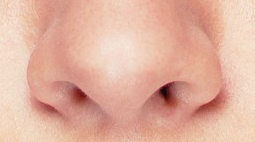Losing the ability to identify a particular perfume is a strong predictor of death in older adults, according to new research.
The conclusion followed a study by the University of Chicago of 3,005 adults who were asked to identify five distinct common odors: peppermint, fish, orange, rose and leather.
Results showed that almost 78% of those tested could smell normally(normosmic); with 45.5% correctly identifying 5 out of 5 odors and 29% identifying 4 out of 5. Almost 20% of participants were found to have an impaired sense of smell (hyposmic), and only got 2 or 3 out of 5 correct.
The remaining 3.5% had completely or nearly lost their sense of smell (anosmic) and could identify just 1 of the 5 odors (2.4%), or none (1.1%).
In a second part of the study, 5-years later, the researchers ascertained which participants were still alive. Results showed that 430 (12.5%) of the original 3005 subjects had died and 2,565 were still alive. After adjusting for demographic variables such as age, gender, socioeconomic status, overall health, and race, results showed that participants with smell loss were significantly more likely to have died within the 5-years.
39% of study subjects classed as anosmic died during that period, compared to 19% of those classed as hyposmic and just 10% of those with a healthy sense of smell (normosmic). Further analysis revealed that olfactory dysfunction was better at predicting mortality than a diagnosis of heart failure, cancer or lung disease, and for those already at high risk, anosmia more than doubled the probability of death. The only factor that was a stronger predictor of death was severe liver damage.
Jayant Pinto, MD, an associate professor of surgery at the University who carried out the study said: “It doesn’t directly cause death, but it’s a harbinger, an early warning that something has gone badly wrong, that damage has been done.
“Our findings could provide a useful clinical test, a quick and inexpensive way to identify patients most at risk.”

